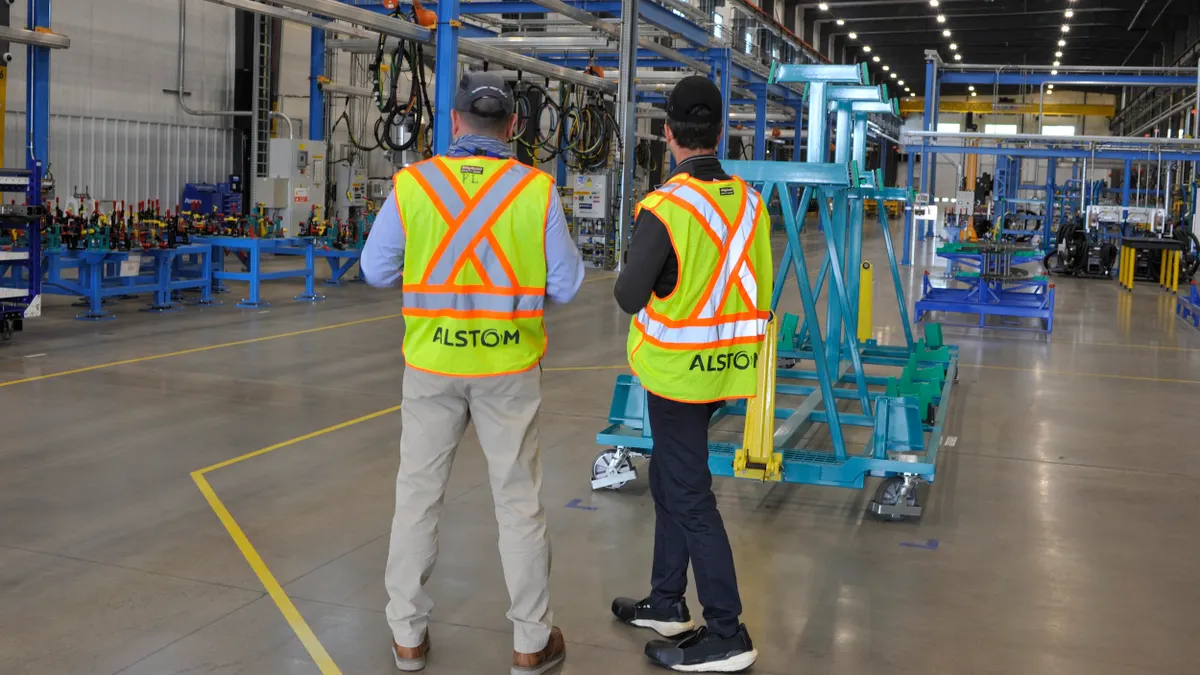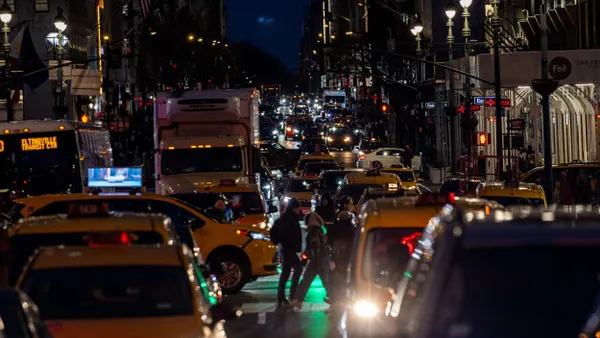Editor's Note: The following is a guest post from Meagan Crawford, executive director of Urban Economic.
Transport: it’s an indispensable part of modern living. The composition of our society’s infrastructure gives vehicles a pivotal role in our daily lives. Yet, at a time when the effects of climate change are clearly visible, it’s untenable that the world’s fastest growing source of energy-related carbon emissions should remain unchecked.
But what can we do? It’s a problem that feels too big to be surmounted, too expensive to be economically viable — which leaves it in real danger of being ignored.
The reality is that investment in low-carbon passenger transport has the potential to deliver enormous economic and social returns, and the ability to make a significant positive environmental impact.
The problem with urban transport
The transport sector accounted for 23% of energy-related greenhouse gas (GHG) emissions in 2010, according to the Intergovernmental Panel on Climate Change. While the environmental implications of this figure is obvious, it also has real human and economic consequences.
The Organisation for Economic Cooperation and Development (OECD) reported in 2016 that if emissions go unchecked, the annual healthcare costs related to air pollution will rise from $21 billion in 2015 to $176 billion by 2060 globally, fueling an additional 2.5 billion lost work days. It is clear that GHG emissions simply aren’t going to reduce without intervention, but the cost-value ratio of that intervention may be better than many think.
A recent report by the Stockholm Environmental Institute for the Coalition for Urban Transitions (SEICUT) found that a bundle of low-carbon investments and measures across 16 city sectors, including transport, could cut global urban emissions 90% by 2050. This would make vast inroads toward preventing global warming that would reach beyond the 2 degrees Celsius "danger line."
While enhancing sustainability can require substantial investment, the SEICUT report also calculated that these measures could yield returns worth $24 trillion — equivalent to nearly one-third of 2018 global GDP — over the next 30 years. The estimated returns on low-carbon passenger transport were miles ahead of other sectors.
The benefits of sustainable urban transport
Transitioning to a more efficient vehicle fleet in cities worldwide would require a total incremental investment of $8.6 trillion, which includes the additional costs of owning, operating and fueling more efficient vehicles, according to the Coalition for Urban Transitions. It’s an eye-watering sum, but would pay for itself within eight years. By 2030, annual returns would reach $320 billion, with that figure exceeding $1 trillion annually by 2050.
These returns are direct fuel-related savings. When other economic benefits are taken into consideration – the impact of lower emissions and cleaner air – even higher economic returns could be gained. And that’s before you factor in the 3.6 million jobs that could be created — and the global health benefits.
Should measures be taken to help the public embrace low-carbon vehicles, we could avoid releasing 0.71 gigatonnes of equivalent carbon dioxide (GtCO2-e) into the atmosphere in the next 10 years. Add in the use of clean electricity for our sustainable vehicles and that figure would dramatically increase.
Low-carbon vehicles are not the only solution if we want to solve the associated problems of congestion, pollution and economic efficiency. Investment into mass urban transit could alleviate congestion, provide affordable transport for more people and yield even larger economic returns, as well as providing significant environmental benefits.
A total investment of $4 trillion in public buses, trains and railway tracks would yield $1 trillion in annual benefits by 2030, with a net present value of $19.6 trillion — the largest of any investment modeled. It would pay for itself in just one year. By 2050, this move has the potential to support nearly 12 million jobs and reduce carbon emissions by 0.73 GtCO2-e. And it’s entirely doable, as a handful of forward-thinking cities have already shown.
What are countries doing to reduce transport emissions?
The move toward sustainable transport has been slow, but a notable few have made important strides:
- In 2018, Shenzhen, China became the first city in the world to electrify its entire public bus fleet. The city’s 16,000 e-buses are estimated to have reduced annual CO2 emissions by 440,000 tons.
- Since 2009, Bogotá, Colombia, has been taking a series of steps to enhance public transport facilities, reduce private motor vehicle ownership and encourage the use of bicycles. By 2012, the city was able to reduce CO2 emissions by 3.8 million metric tons and create 1,500 unskilled jobs.
- Copenhagen, Denmark, pioneered the green transport movement, opening its first dedicated bicycle lane in 1910. Today, there are more bicycles in the city than people. By 2025, it is expected that Copenhagen will become the first capital in the world with neutral carbon dioxide emissions.
Sustainable transport is an entirely viable option, globally. With China creating zero-emission vehicles and major cities like Paris implementing sustainable multimodal transport initiatives, there is both the evidence that the transition is economically feasible and the vehicular means to realize the theory.
The World Health Organization (WHO) estimates there are already 7 million deaths globally each year due to urban air pollution, while the environmental and economic costs associated with climate change are ever increasing. Pollution-related healthcare costs could soar by $155 billion in the next 40 years. Natural disasters already cost about $18 billion every year in lower- and middle-income countries, and trigger wider disruptions for households and firms costing at least $390 billion.
It's estimated that climate inaction will push 100 million people into poverty by 2030. With such a strong, positive business case and demonstrable ROI to speak for sustainable transport, governments surely have a moral obligation to act.

















